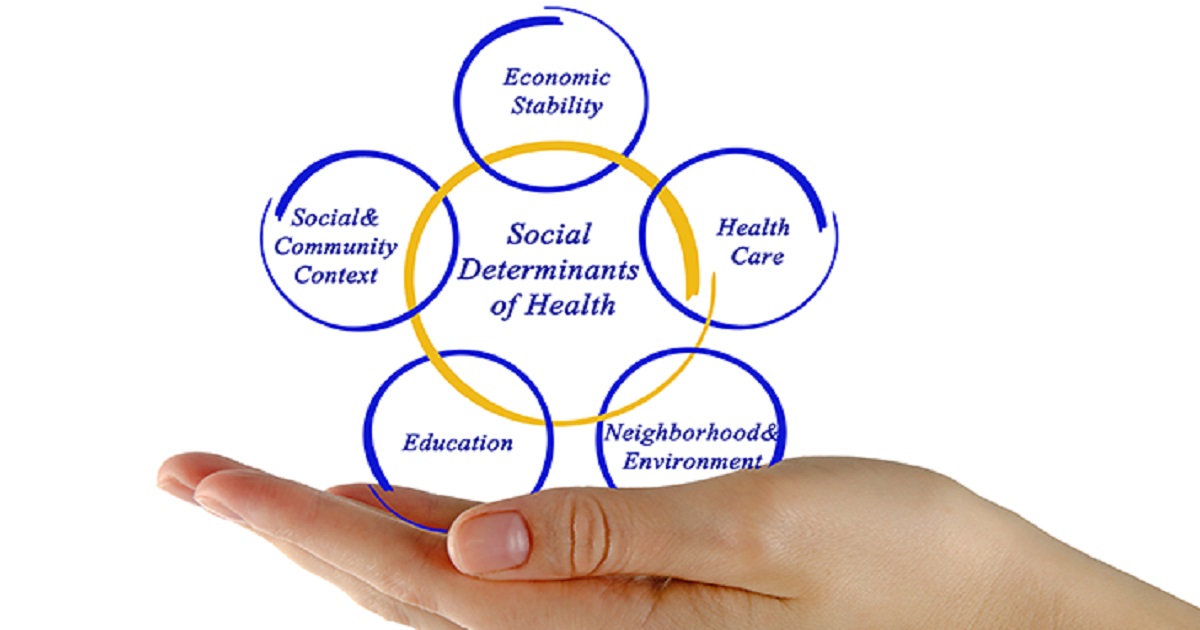
Health Technology, Digital Healthcare
Article | August 21, 2023
Across the spectrum of healthcare delivery – payor, provider, vendor, consumer, there is a land rush underway to embrace consumer-centric care. With tools like value-based care, chronic disease management, retail services, analytics, and remote patient monitoring, healthcare organizations are pivoting towards capabilities that provide a deeper understanding of patient behaviors and address the whole patient and not just the condition.
Read More

Health Technology, AI
Article | July 18, 2023
NIS2 Cybersecurity Rules Approaching: Is Your Organization Prepared? The EU NIS cybersecurity regulations are evolving for 2024, and if you’re not currently aware of how they’ll apply to your organization, now is the time to get up to speed with the desired requirements. Not only is the directive being tightened, but an extended range of healthcare and related organizations will be added to the list of ‘critical entities’ that must comply. These include certain medical device manufacturers, pharmaceutical companies, and organizations that carry out R&D. The Network and Information Systems (NIS) standards were set up in 2016 to protect essential services – such as water, energy, healthcare, transport, and digital infrastructure – from online cyberattacks. The updated legislation, NIS2, will have stricter rules,reporting requirements, and higher penalties for non-compliance. They will apply to medium-sized and large businesses that operate within one or more EU countries. Those based only in the UK can’t sit back; however, the original NIS regulations will still apply as part of British law. What’s more, a UK version of the rules is coming very soon, and it’s likely that the framework will closely resemble the EU’s. What will the requirements cover? There are a number of cyber risk management measures that all organizations that come under the scope of NIS2 will be required to put in place. For instance, they will need to conduct regular security assessments and risk analyses, adopt incident response and handling plans, and appoint a chief information security officer (CISO), among other obligations. The new directive will streamline and strengthen incident reporting requirements. Entities must notify regulators of any incident that has compromised data or had a significant impact on the provision of their services, such as causing severe operational disruption or financial loss. Applying information system security policies and business continuity plans will form part of the obligations, as will conducting cybersecurity testing and training for all staff. The use of multi-factor authentication (MFA) and encryption, wherever appropriate, will also be mandated. There is plenty of focus within the directive on the cornerstones of cybersecurity best practices particularly, the proper control of administrator-level account credentials, privileged access, and endpoints, all of which are prime targets for attackers. Under NIS2, organizations are being separated into ‘critical’ and ‘important’ entities. It’s important to determine which category yours’ will fall under, as each has different requirements. The third-party threat will also be addressed in NIS2 by pulling in managed service providers (MSPs) to the list of ‘critical entities’, with the aim of keeping digital supply chains secure. MSPs are often granted privileged access to clients’ corporate systems and networks, which creates security risks. What are the consequences of non-compliance? Organizations that come under the regulations’ purview will be subject to random checks, regular security audits, on-site inspections, and off-site supervision. For those found to be in breach, sanctions could include warnings, temporary suspension of certain activities, and temporary prohibition to exercise certain managerial functions. Financial penalties could be as high as 10 million Euros or 2% of an organization’s global turnover, whichever is higher. What steps should healthcare organizations take now? Organizations should take action to establish whether the EU or UK NIS2 regulations will apply to them and what their responsibilities will be. Having identified any gaps in existing cybersecurity processes, policies, and practices, they must determine what changes need to be made to address them. As a priority, they must review their incident response plans and incident management and reporting procedures. It’s also a good idea to begin assessing the security posture of partners and third parties in the supply chain and incorporating relevant security requirements into contracts. Given the framework’s focus on protecting privileged admin accounts, organizations should implement controls limiting the number of staff members with these robust credentials. Implementing privileged access management (PAM) will allow IT to control who is granted access to which systems, applications, and services, for how long, and what they can do while using them. Preparing for the introduction of the EU NIS2 regulations should be considered more than just a compliance exercise. By meeting the strengthened requirements, healthcare organizations will be building a foundation of resilience that protects them, their customers, and the essential services they provide.
Read More

Health Technology, Digital Healthcare
Article | August 16, 2023
It is not an easy task to engage decision-makers in hospitals, insurance providers, health systems, and private practices. These high-powered directors, managers, and executives are busier than ever. This makes the process of health tech marketing difficult. Apart from overwhelming job responsibilities, these healthcare professionals are also inundated with ads, emails, and phone calls. So rather than sending them messages randomly, it is important to help your prospects when they are free from their daily disruptions and have time.
Inbound marketing, a new form of marketing, lays out various effective healthcare marketing techniques, tricks, or tactics. These health tech marketing techniques or methodologies are helpful in the three stages of your health tech client journey:
Awareness Stage: This is the stage where they do not know they have a problem, but you make them aware of the fact that they have a problem.
Consideration Stage: In this stage, they are aware that they have a problem and consider finding a solution from you or your competitor.
Decision Stage: This is the final stage, where prospects make a decision.
Here are some effective health tech marketing techniques to engage new health tech marketing prospects online all through these stages.
Offer Entertaining and Informative Blog Content
Content is king. Roper Public Affairs, in their research report, say that around 80% of B2B decision-makers prefer to gather information from articles and blogs over ads. According to the research done by HubSpot, companies that publish blogs frequently get 4.5x more leads. Engage your health tech prospects with regular content that can address their interests and the problems they face.
However, it is a mistake to focus only on your health tech company’s benefits, features, or sales pitches in your blogs. This may make your prospects think you are just after their money. One of the best health tech marketing techniques to engage your prospects online is to provide answers to the challenges they face.
You can even ask and encourage your clients to contribute success stories or guest posts. These posts will have more value and the chances of them being shared are high. It is also better to create a strategy to make sure the health tech marketing content you make is valuable and relevant to your potential clients.
Encourage Social Media Feedback and Blog Comments
Providing great and prospect oriented health tech marketing content is just the beginning. You can solicit reactions from your audience. Asking questions at the end of blogs and social media health tech messages is a great way to collect reactions from the audience. It is good to thank them for responding when they leave a comment. Also, give them a comprehensive answer.
This will help build your credibility and make the clients come back. Sometimes, you may get spam comments, which are not connected to your post. Weed them out to make all comments relevant to the post. This health tech marketing technique will make your potential clients stay engaged in what you post online.
Host Google Hangouts or Webinars
People love being visually engaged. So, webinars or Google Hangouts are powerful tools that allow real-time interaction with your customers. This helps you to establish a personal connection with your potential clients through video or audio. Various visual aspects, including slides, graphics, and live videos, make it easier for you to share your content with customers.
Being an interactive health tech marketing technique, at the end of webinar sessions or Google hangout, you can have a Q and A session to clarify any questions from the clients. Compared to merely writing blog posts and articles, this, as a two-way dialogue, and will help you a lot in building a strong relationship with your clients.
Create a Group or Community
One of the best health tech marketing techniques to engage new customers is to interact in online forums and communities. Your buyers can get added to your members-only group automatically and then these members can socialize with each other and discuss healthcare technology.
These forums can be used to share content that is not available to the public. To the members, you can also offer various discounts and special pricing. Your customers, being part of such a group, will feel special and increase the possibility of a repeat purchase.
Co-Create with Existing Customers
If you are planning to write an e-book, improve your website, or launch a new product, involve your existing customers by getting suggestions from them. For fostering loyalty, depending on the situation, it is very effective to make your customers involved in major decision-making processes. They will feel proud that they participated, at the end of the process.
This health tech marketing technique may even allow you to hold a contest to select an idea from your customers for your next design and offer rewards for the one which is selected. Rewards can be a special mention on your website, a discount, or a freebie.
Celebrate Together!
Another great health-tech marketing technique to build stronger relationships with your customers is to celebrate milestones with them. Any achievement, small or big, can be a milestone. Even, achieving an award for attaining a certain number of followers can be a milestone. Sharing such moments of success with your customers and social media followers may make them feel like they are part of your business and success.
It is also a good idea to give them a discount offer. Also, recognizing the success of your clients and featuring them will establish a good relationship with customers.
Monitor Social Media
The best place to engage your clients in conversations about your products and industry is social media. Selecting a topic that is trending in your industry may be a hot cake for you to have the conversation on your social media platforms. Tracking trending topics related to your industry will always give you an insight for your next blog post and social media posts.
By sharing, liking, and providing answers you can also take part in conversations. This will make you an authority and customers will feel good about your credibility. As a health tech marketing technique, monitoring social media will make you gain the trust of the customers and build your brand gradually but successfully.
Build a List of Leads and Nurture them
Email marketing, as a health tech marketing technique, is a very effective strategy to nurture B2B customer relationships. According to HubSpot, for business communication, 86% of people prefer emails. You will be in the minds of potential customers through your value-packed and attractive emails. They will remember you when they identify a requirement.
Through your emails, you can update and educate your potential customers about relevant topics and trends related to the health tech industry. A newsletter in a week will be fair enough to keep them engaged and updated about your brand and industry.
Summing up
The key to generating more qualified leads and increasing your brand recognition is engaging new prospects tough new and innovative health tech marketing techniques. This will make your sales team’s job easier; they can convert these leads into customers. The above-listed health tech marketing techniques to engage with your prospects can be effectively used with your well-crafted Inbound marketing strategy.
Doing all of these alone can be very challenging. We, at Media7, partner with healthcare technology companies and healthcare tech marketers to offer support, strategy, and extending help to implement these activities. Through the collaboration, we help health tech companies to attract more visitors to their websites, generate leads, convert, and make them your happy customers. For more details of our services, visit our website: https://media7.com/
Frequently Asked Questions
What is a health tech marketing strategy?
Health tech marketing strategy is a part of an inbound marketing process for marketing healthcare tech products. It uses resources that can trace various opportunities through lead generation and branding, and overcome threats of healthcare businesses, which is highly competitive.
What is the best health tech marketing technique?
The best health tech marketing technique is to generate leads through various content forms. Health tech Content marketing helps create awareness about the product and attract clients to it. Different forms of content can include blogs, articles, press releases, newsletters, and much more.
Where to start when creating your healthcare marketing strategy
The best way to start when creating your healthcare marketing strategy is to set your goals. This is because the success of your healthcare marketing strategy depends upon the goal you set for yourself when you start the business and the marketing for it.
Read More

Article | March 3, 2021
Is your health technology company publishing content online? Not sure how to make your health tech content marketing effective?
Each step taken in the process of content marketing matters. Skipping essential steps may negatively affect the whole process. The following steps are critical in your content strategy:
• Defining your ideal buyer
• Gathering insights about how they make decisions
• Documenting how your content will address their needs
Lately, health tech companies are facing too much competition. Thus it would be wise to equip yourself with a good marketing strategy, including a clear content marketing plan. This blog focuses on making your health content marketing more effective, overcoming challenges, and eliminating the chances of failure.
Content Marketing challenges for Health Tech Marketers
Heath tech brands face multiple obstacles with health tech content marketing. They must deal with many challenges such as content proliferation, uncoordinated and inconsistent content creation, and difficulty in reaching out to customers and prospects with relevant and timely content.
A lot of hard work and time is required to create great content. Let us have a closer look at the challenges faced by health tech marketers related to content marketing.
Determining Content Marketing ROI
Many of the health tech content marketers are struggling to show ROI from their content marketing efforts. They cannot claim a specific conversions rate from a channel or a piece of content. Often digital conversion paths of the health tech industry cannot be analyzed or tacked.
Some other biggest challenges of health tech content marketing are tying content to conversions, defining appropriate and relevant metrics for measuring and evaluating the impact of the content marketing efforts on its bottom line.
Figuring Out How to Feed the Content Beast
Including health tech brands, many brands spend too much time thinking and worrying about creating compelling content. Or they worry about making content thattheir boss, salespeople, or other stakeholders need. The goal should be creating content consistently that is necessary for the client's journey. Your health tech content marketing should focus on your target audience searching online for your product and business.
Proving Credibility and Authority
Many health tech marketers struggle with defining a credible and authoritative voice for their brands. They fail in the process of cutting through the noise and grabbing the attention of their target audience for this very reason.
A health tech content marketing strategy should maintain the brand’s identity, improve its authority, and boost ROI. Here, thought leadership has a role to play. Use your people, their expertise, and their passion effectively to share what they know about your product with your target audience. Trust and credibility will follow.
Maintaining Volume, Quality, Speed
Another significant challenge of health tech content marketing is developing compelling, engaging content fast without compromising on volume and quantity. For many marketers, a big pain point is trying to stay agile and nimble within a large corporate structure.
Continuous Learning
The marketing landscape is ever-changing. It means health tech marketers have to dedicate themselves to learning throughout their life.. They also have to reinvent through innovation to avoid extinction. Primarily, health tech content marketing needs constant innovation and learning. Everyone is trying to navigate the learning curve. It is very challenging for marketers to train teams and update them with the latest marketing practices.
Influencer Marketing
Another challenge faced by most marketers in their health tech content marketing efforts is identifying influencers to amplify content. Creating great content is just the first step. Having an effective promotion strategy to reach your prospects with your content helps.
Reasons for Health Tech Content Marketing Failure
A study by Healthcare Information and Management Systems Society (HIMSS) on health tech content marketing shows a vast gap between results and goals. Is there discontent in health tech content marketing? Eighty-five percent of the survey participants said they have a content marketing strategy, but only 4 percent only said their content marketing strategy was effective.
So, it's clear that something was not working for them. Here are some of the key reasons:
The Absence of a Content Strategy
Except for some large tech companies, such as IBM, Microsoft, and Salesforce, most vendors do not have a content marketing strategy. For many tech companies, content marketing is part of their overall business strategy. So consider building a health tech content marketing strategy to have a leg up on your competitors.
Lack of Sponsorship
Creating compelling content is a low-priority task for most B2B tech companies. A small marketing team usually takes care of health tech content marketing with limited resources and budget. It results in content that does not align with your market positioning and business strategy.
Content-Creation Bottlenecks
Content marketers need quality content for marketng. For this, subject matter experts (SME) should be involved in the process of content creation. SMEs, most often, are too busy to participate in the process. As a result, the content may turn out low in quality and might not be consistent
Lack of a Content Distribution Strategy
Unless you promote high value content on all the digital and social media channels, no one will hear about your health tech brand. Most B2B health tech companies fail to promote themselves through effective health tech content marketing on multiple digital and social media channels.
No Patience
B2B health tech companies want instant results. The survey by in 2020 HIMSS points out the minimum time needed to fetch results from content marketing programs. A health tech content marketing program launched in this quarter will not bring you any developments in the same quarter.
Effective Content Marketing Plan for Health Tech Marketers
The global pandemic has accelerated the shift towards digital marketing. Many healthcare technology marketers focus on pure sales collateral and product-centric content instead of thought leadership and human-centric content.
Here are five areas that deserve more attention in your health tech content marketing plan. These should be top priorities in your content plan.
Planning the Process and Setting Reasonable Goals & Objectives
Data shows that most healthcare technology companies do not have an effective health tech content marketing plan. It is not surprising that these companies, accelerating ahead everyday, do not have the time to plan or enough resources to execute it. There are three reasons behind it:
• They never made planning a proper priority.
• They realize they don’t have the time.
• The team doesn’t know where to start.
Good planning with realistic goals and expectations solves this issue. Quality content marketing is a long-term investment, not a short-term performance vehicle.
Benchmark the Market & Your Competition
Investigating your competition may get you down. Analyzing every aspect of your competitors’ content, including approach and strategy, will help you learn many essentials things. You will get ideas to improve your health tech content marketing from your competitor analysis.
Do not get confused between your sales competitors and content competitors. Your sales competitor is the one who sells your exact product or service. Your content competitors are companies ranking on search engines for the same content that you want to ranked for on search engine result pages. In addition to pure sales competitors, these content competitors can include major publishers such as trade associations and newspapers.
Fine-Tune Your Messages, Themes & Topics
It is effortless to come up with a long list of content ideas. It is vital to understand the themes and topics, which will work better for your business goals. The topics should be worth the time and effort you put in. Your themes, topics, and other content ideas in your health tech content marketing plan should support your core health tech messaging.
People usually tend to create content randomly and wonder why their content marketing does not work in the end. Fine-tuning your themes, messages, and topics and making sure they are all unified in the process is a big part of ensuring your content succeeds in the end.
Address All Four Content Distribution Channels
Creating great content is just a first step to your health tech content marketing. You may have to think of the content distribution channels: owned media, internal channels, earned media, and paid media. All of these channels have multiple options for content distribution. Depending on your company’s business goals and particular situations, you can choose the best-suited application from these channels.
Get the Most Out of Your Content Marketing Efforts
Maximize your health tech content marketing investment with the three Rs: refresh, repurpose, and repromote.
Refreshing means updating old content that performed well in the past. It may include changing the published date and updating the internal links to timely and more current information. Repurposing means changing the format. You can make a blog post out of a webinar or create an infographic out of a case study. Promoting and redistributing older content that performed well in the past is repromoting.
With content marketing, it is tough to have long-term success without a documented strategy and commitment. With a detailed process, you will have clarity about your goals and the tactics you will use to achieve them. If you do not have this practice, it's better to develop your strategy and write it down to improve your health tech content marketing's better effectiveness.
Content marketing is a proven way to connect with the tech industry audience, especially in health tech. Creating great content about your business, which the audience finds reliable and helpful, will make your company reliable and a trusted source to solve problems.
Doing it alone may be a tiresome job. We, at Media 7, provide all the assistance in marketing technology products online. We have the right solution for all your demand generation, lead generation, sales, and marketing problems. Media 7 converts leads and turns them into your happy customers forever. To know more about Media 7, visit: https://media7.com
Frequently Asked Questions
Why is content marketing important in health tech?
Content marketing is crucial in health tech as unique content makes your target audience trust your brand and consider it a trustworthy source for solving their issues. Moreover, to build your brand, content marketing is a vital component.
How do you create a successful health tech content strategy?
When you create a successful health tech content strategy, an ideal buyer profile, buyer persona, customer journey, etc., should be considered. Along with that, you should have clear objectives and goals when you make a content strategy.
What is the essential step in creating a health tech content marketing plan?
The essential step in creating your health tech content marketing plan is defining your targeted audience and understanding the buyer persona. It will help you create relevant and audience-focused content.
Read More